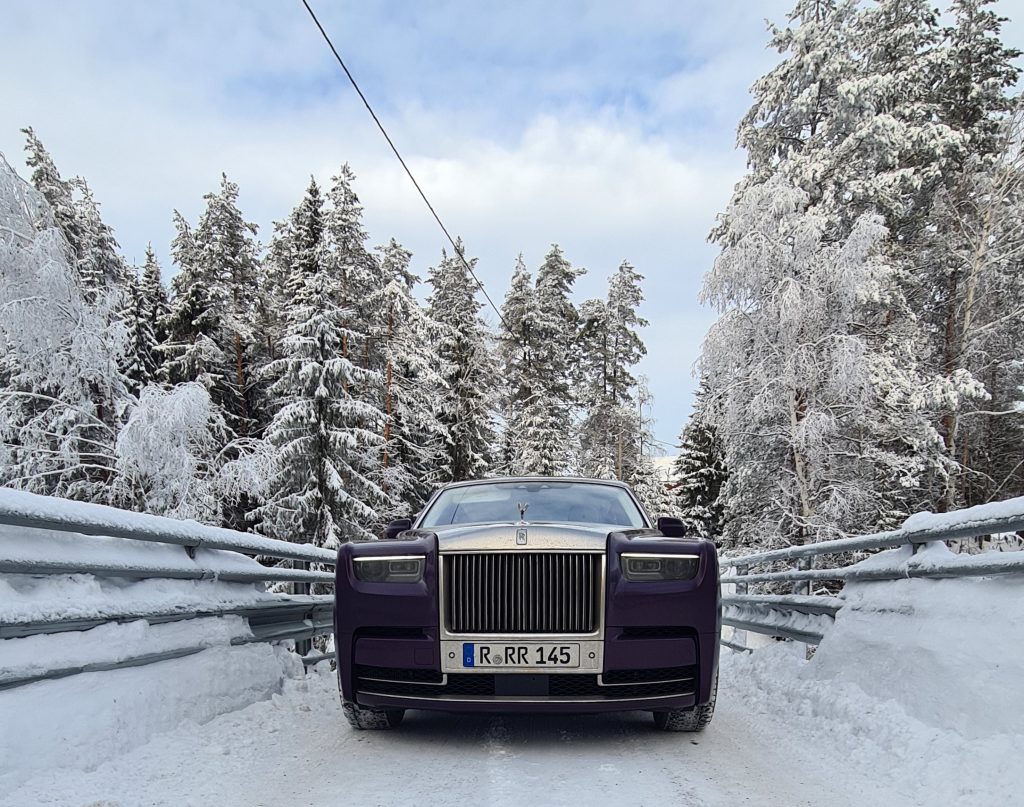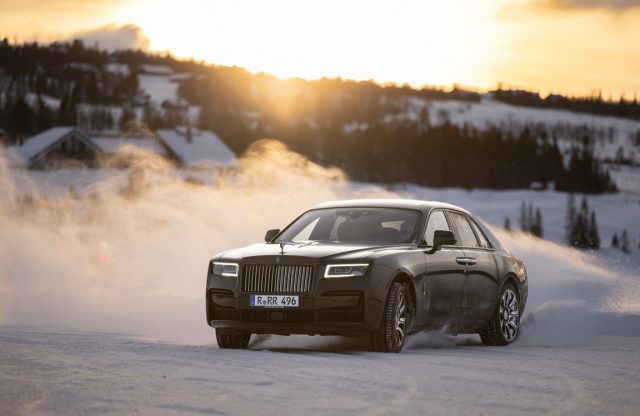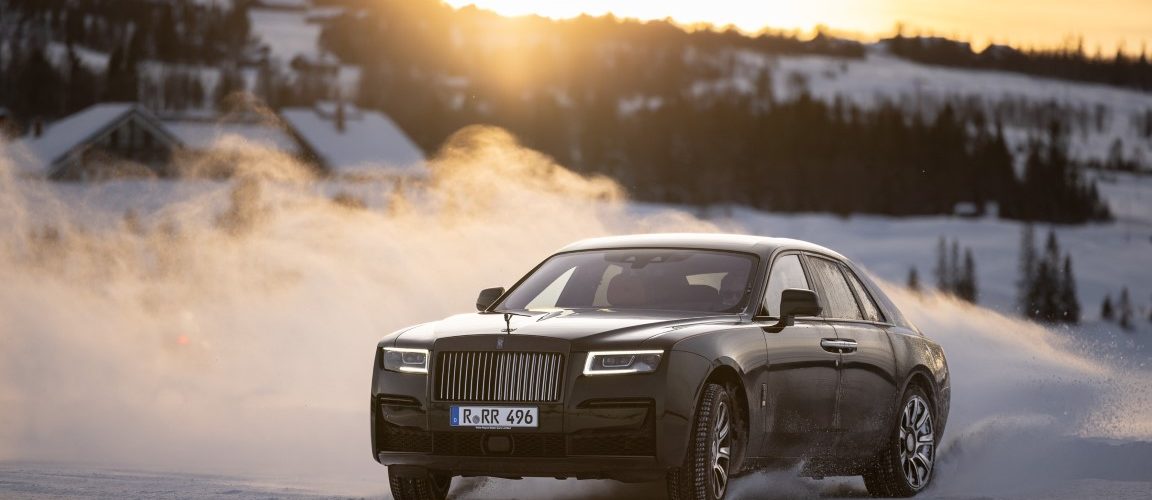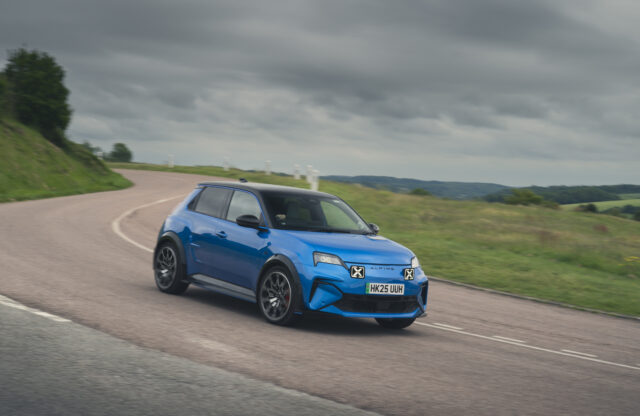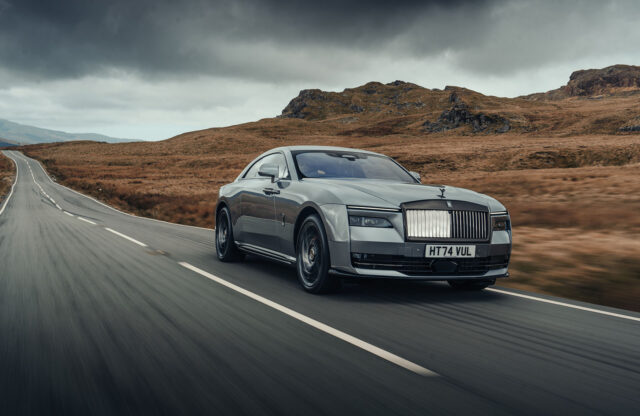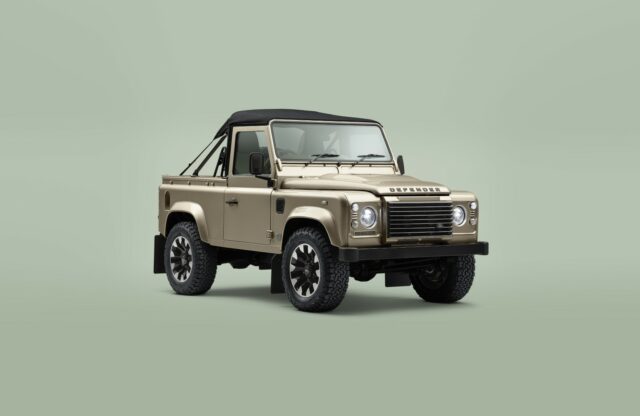WORDS: ELLIOTT HUGHES | PHOTOGRAPHY: ROLLS-ROYCE
As my plane comes in to land, I’m grateful that Oslo Airport’s runway is free of the snow and ice that surrounds it – I doubt winter tyres are adequate for landing a Boeing 757. But are they enough to keep a two-and-a-half-tonne Rolls-Royce on the road in Scandinavian winter? There’s only one way to find out…
A Black Badge Ghost, a Ghost, a Cullinan, and a Phantom are parked line-abreast in the jarringly unglamorous backdrop of the airport car park. Each car’s twin-turbocharged V12 is already running, and wisps of smoke rise from each polished exhaust tip like the condensation from my breath. Then the world’s most polite game of musical chairs begins, as the seven journalists in our group assign themselves to each car on offer.

This being Norway in early February, I’m grateful to end up with the keys to the all-wheel-drive Ghost, particularly as our hotel for the night is located north in the Hemsedal ski resort situated in what’s colloquially known as the ‘Alps of Scandinavia’. From there, our regal fleet will navigate 40km of perilously icy roads until we reach Gol, where we will take part in various “ice-driving exercises”, as the itinerary rather euphemistically puts it. But back to the task at hand.
My gratitude for the Ghost increases once I open the door and settle into its palatial cocoon of leather, lambswool and polished metal. The first five minutes in any modern Rolls are spent exploring how you can attain levels of comfort rivalled perhaps only by your own bed. Turn on the heated seats and centre console, fiddle with the myriad chrome seat-adjustment buttons, fine-tune the climate control, and don’t forget to turn on your massage seat. With all that done, it’s time to set off.
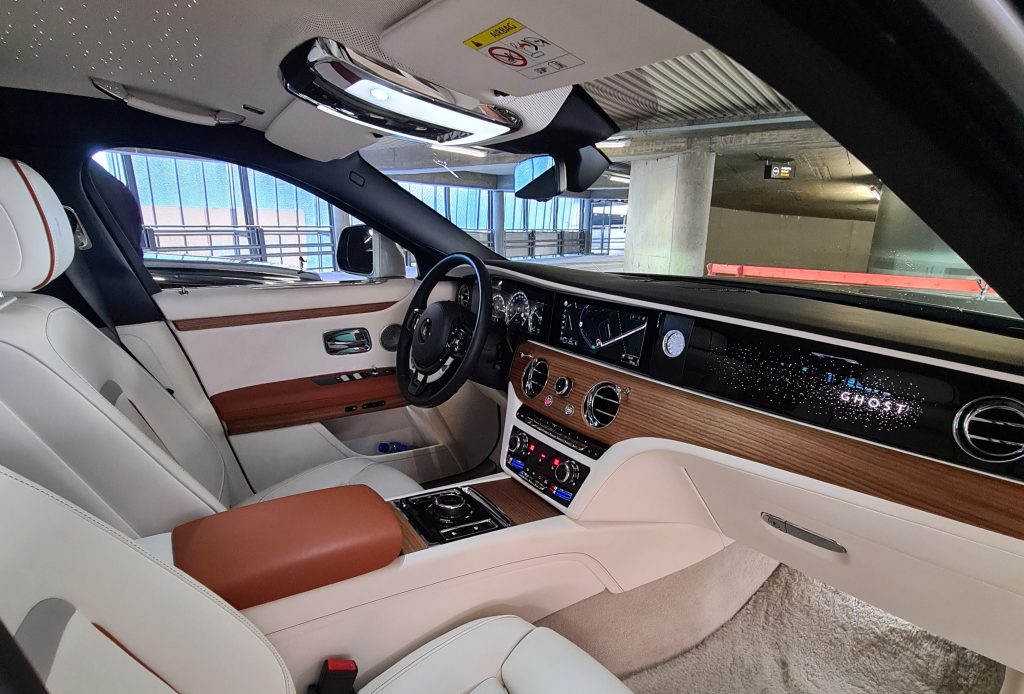
I have no qualms about spending the initial stint of our 217km journey in the passenger seat – particularly as it means I’m relieved of the nerve-jangling anxiety of freeing from the multi-storey car park a vehicle with similar dimensions to a Sherman tank (seriously). The combination of my fellow journalist’s careful manoeuvring and an arsenal of parking aids means that, thankfully, we make it out unscathed.
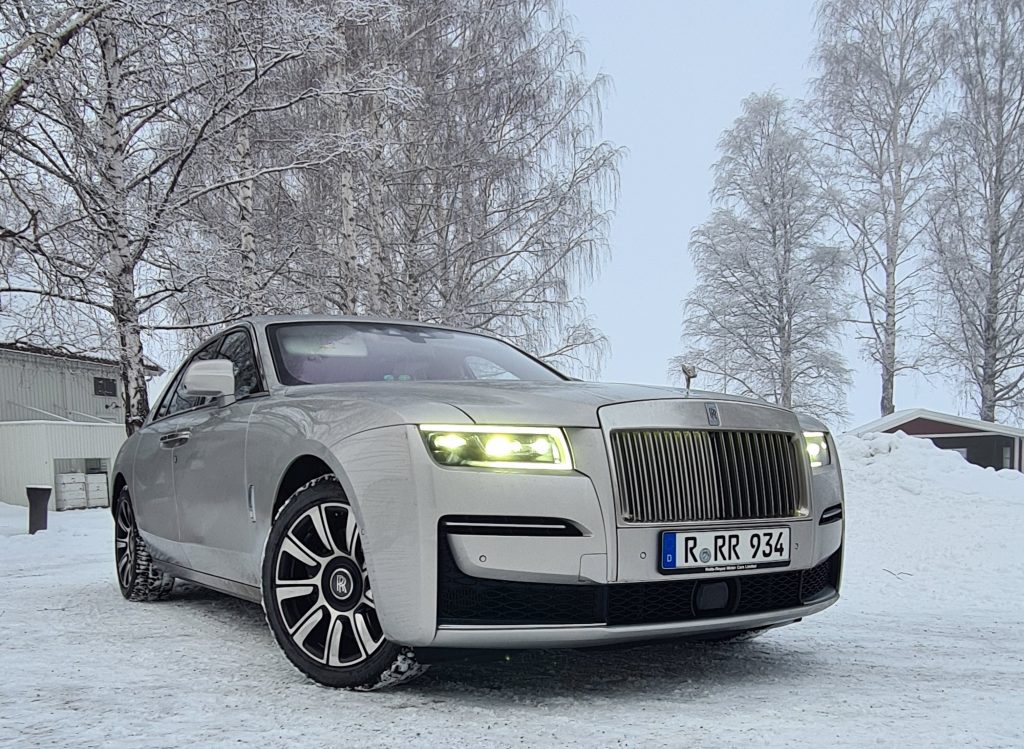
The bleak concrete buildings on the outskirts of Oslo fade as quickly as the daylight as we head north toward Jevnaker for a quick coffee and sandwich stop. Time passes quickly in the passenger seat of a Rolls-Royce, and soon enough, we’ve reached our stop. Caffeinated and ready to go, I begin my stint in the driver’s seat just as the starlight headliner starts to softly twinkle above.
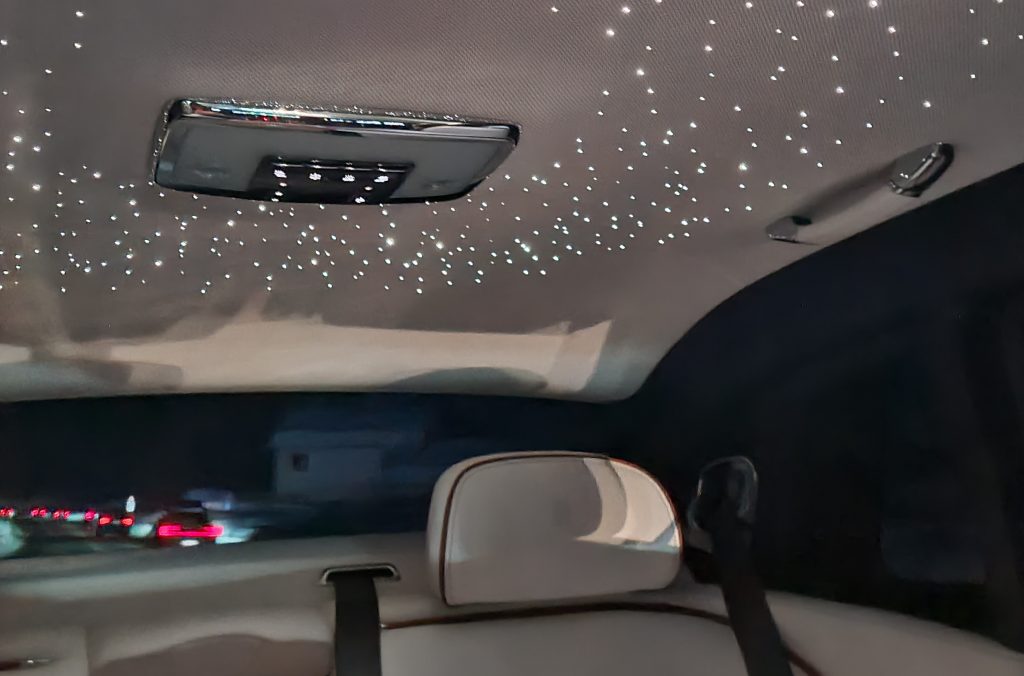
It should come as no surprise that driving on ice-covered single-track roads in the dark isn’t exactly relaxing, especially when the car you’re piloting is very large, very heavy and very expensive. Exacerbating the sense of peril are the HGVs thundering along in the opposite direction. Each produces a vast rooster tail of slush that splatters across the windscreen, momentarily blinding me until the wipers intervene.
The Ghost just puts me at ease despite its size, weight and 562bhp output. Superb GPS-assisted air suspension, all-wheel drive and that creamy V12 power delivery mean we glide along icy roads like the Spirit of Ecstasy sparkling at the end of the bonnet.
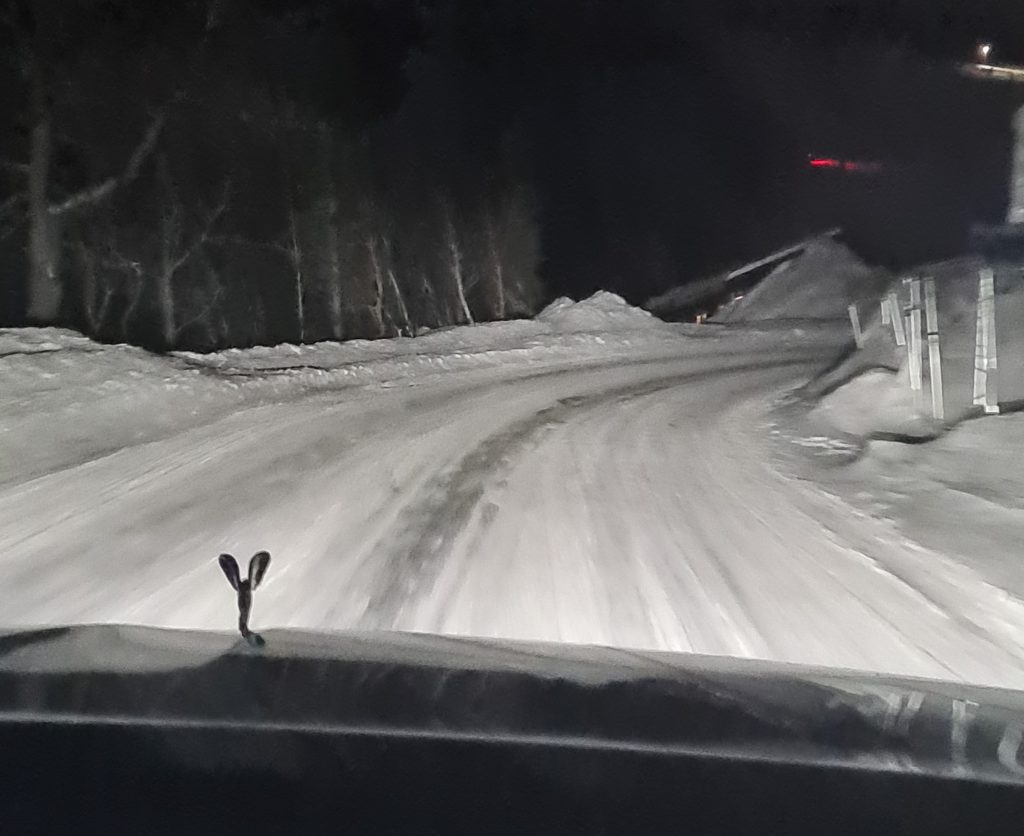
Things get even more challenging as we near our hotel and the road becomes a sinuous alpine pass blanketed in white. Yet, aside from the occasional squirm of the rear axle, the Ghost remains resolutely unphased and competent. Aside from a few sat-nav missteps, the car is a flawless companion, and we arrived at our hotel perhaps more relaxed than we should be.
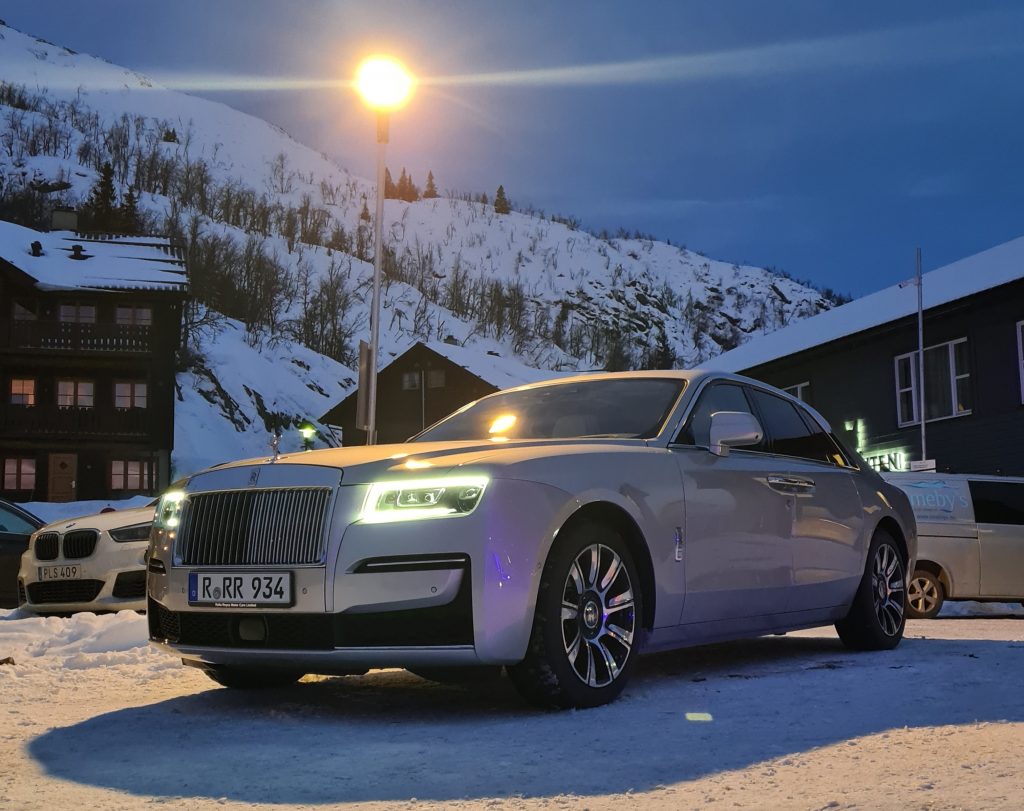
Our group reconvens at dawn, before heading down the mountain towards the frozen lake in Gol for some ice driving. As we continue to descend, snow-capped mountains dominate the horizon while golden shafts of morning sunlight stream between trees and across the road in front of us. The scenery is breathtaking.
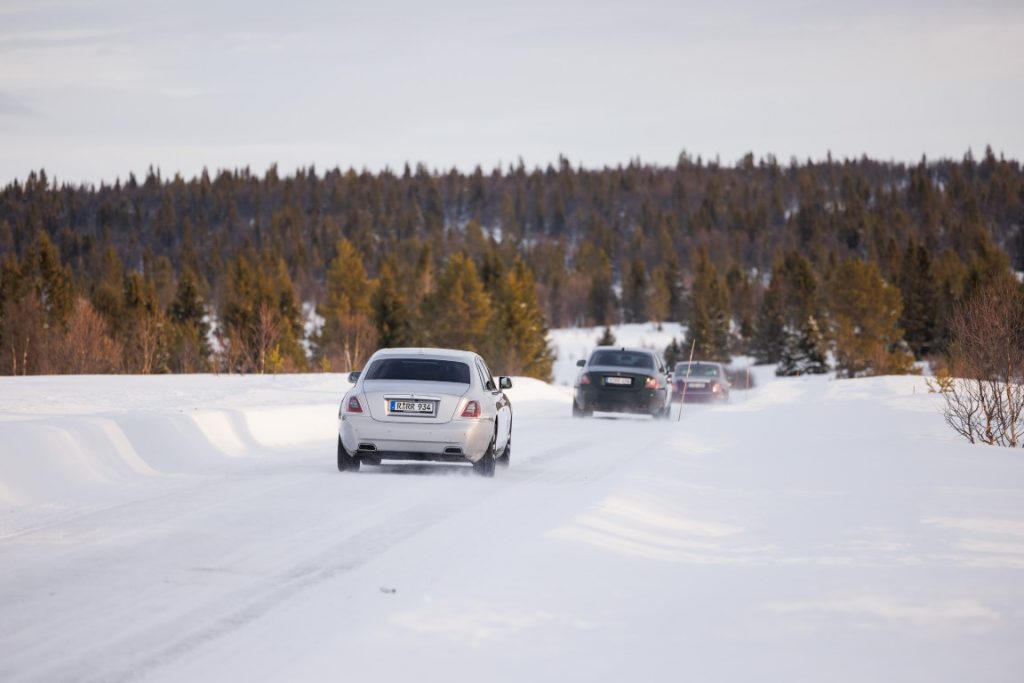
By 9:30am we’ve reached Gol, and the cars are parked in the middle of the lake on a metre-thick sheet of ice. The Norwegian police are present, and we learn that they often use the ice-driving facility for training. When they see the Rolls-Royces, they stop what they’re doing to take a look, and even pose for pictures in the drivers’ seats.
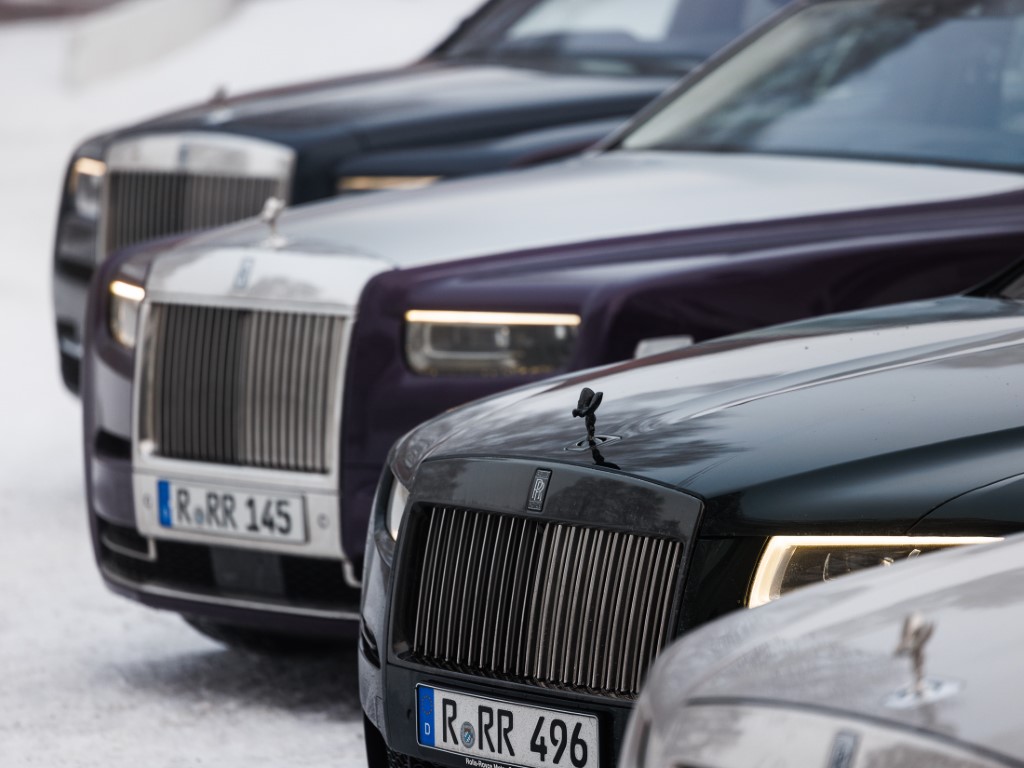
First on the ice-driving agenda is a simple quarter-mile acceleration test in the Black Badge Ghost. Positioned as the brooding, darker version of the standard Ghost, the dechromed model uses the same powertrain as the standard car, albeit with an extra 30bhp that is surely unneeded on a frozen lake.

There are two approaches to running the quarter mile in a Black Badge Ghost on a frozen lake. The first is to unceremoniously smash the accelerator pedal into the thick lambswool carpet. Do this, and power is reduced while the traction-control light blinks at you with disapproval. The second, less ham-fisted approach is to gently feed in the power, minimising electronic interference.
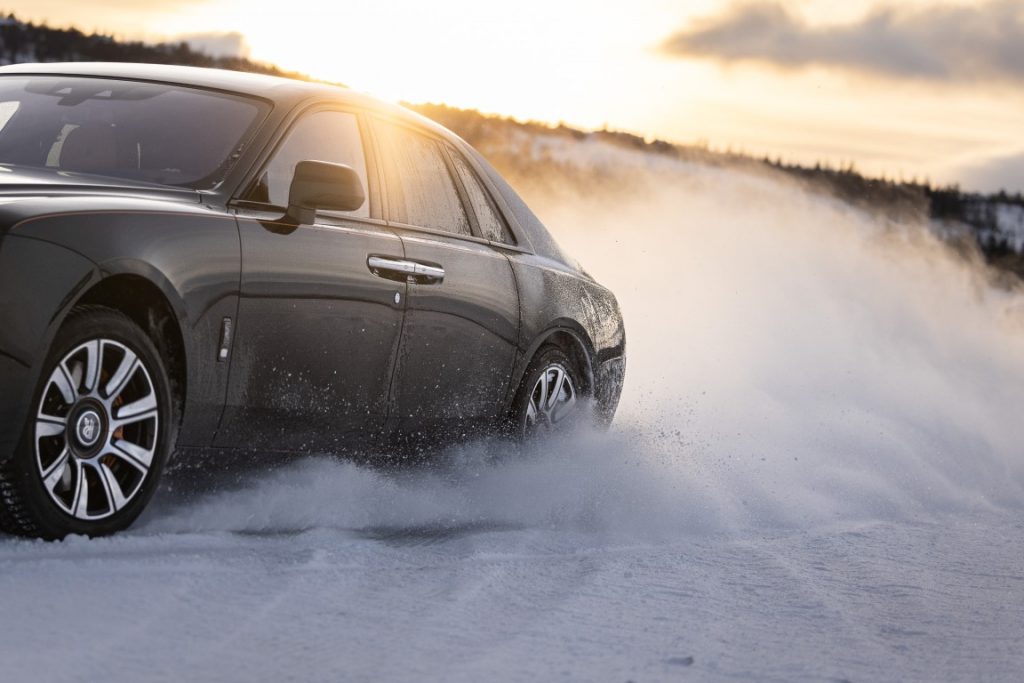
It’s the second method that proves to be faster, and the two-and-a-half-tonne machine’s V12 growls to 100mph by the time you reach the braking board at the end of the makeshift dragstrip. No such finesse is required to slow things down; just keep the steering wheel straight and stamp on the brake pedal, feeling the pads nibble at the discs as the ABS works to bring you to a stop.

Next is the moose test, which is commonly used to assess a car’s agility by performing the sort of aggressive manoeuvre required to avoid a wayward animal. The Mercedes-Benz A-Class famously failed the test in 1997 when it rolled onto its roof, damaging the German marque’s reputation and forcing it to issue costly recalls. Thankfully, the BB Ghost is at no such risk of capsizing.
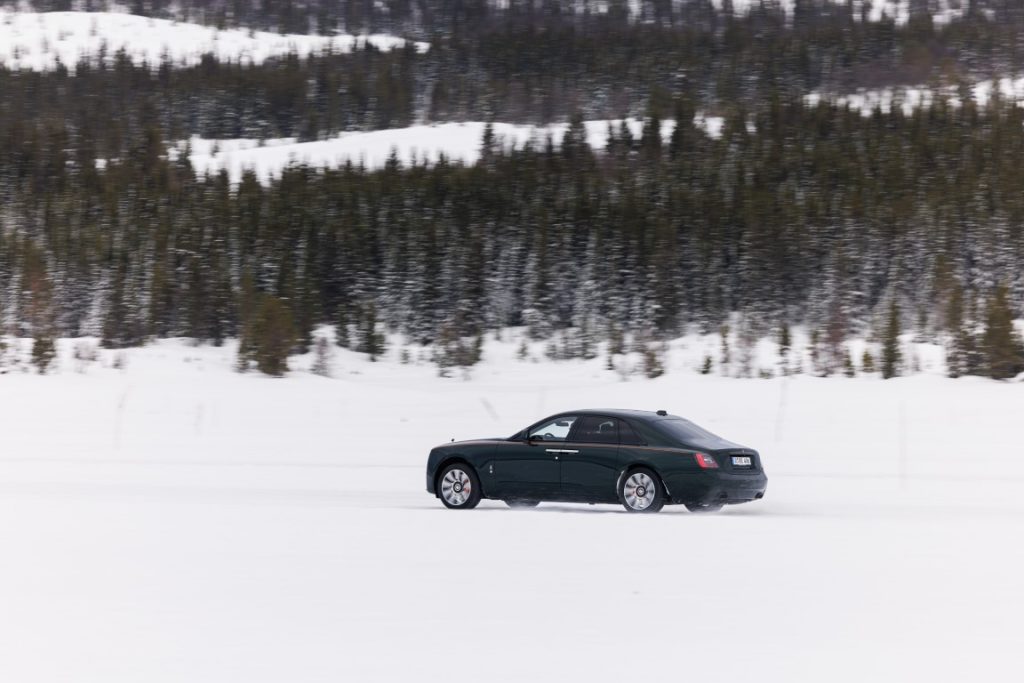
To perform the moose test, I’m instructed to hold the car’s speed at 40mph, brake and flick the car left and then right around cones representing the suicidal moose. Miraculously, if said animal remained very still, it would have survived. Rear-wheel steering, stability control, ABS and winter tyres make the BB Ghost far more agile than it has any right to be on a frozen lake. The key is to be firm with the brake, yet gentle with the steering, keeping the weight over the front tyres without overloading them and so inducing understeer.
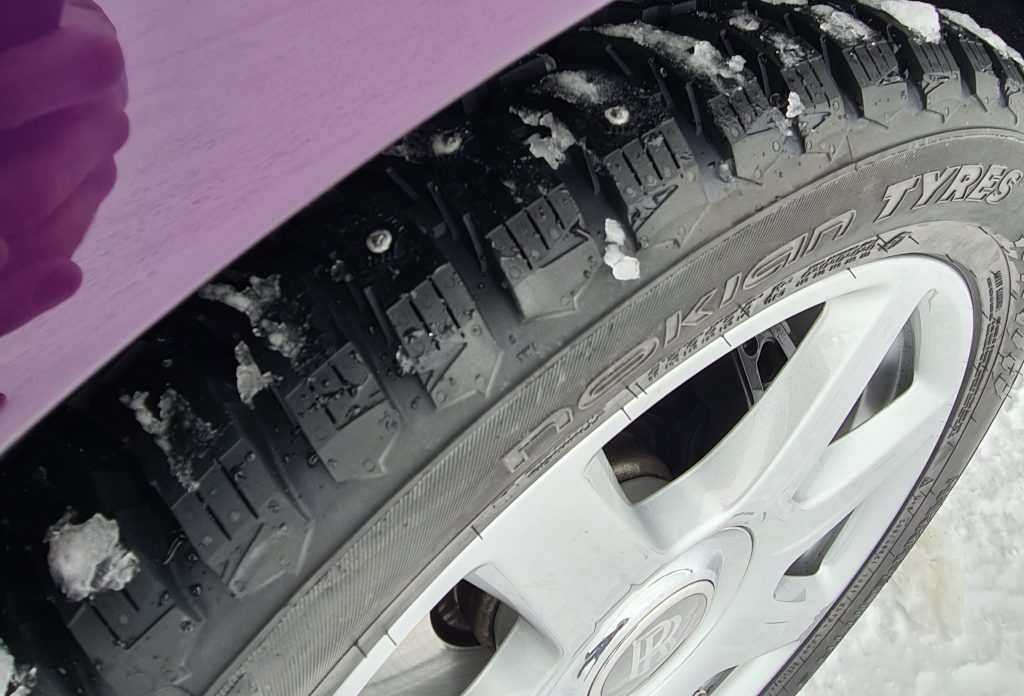
I find myself sitting in the purple Rolls-Royce Phantom VIII as noon approaches. Amusingly, it’s been fitted with studded tyres, probably to compensate for the lack of all-wheel drive its stablemates are blessed with. The rear-wheel-drive Phantom is the car that has been allocated for drifting – which is not a sentence I expected to ever type.
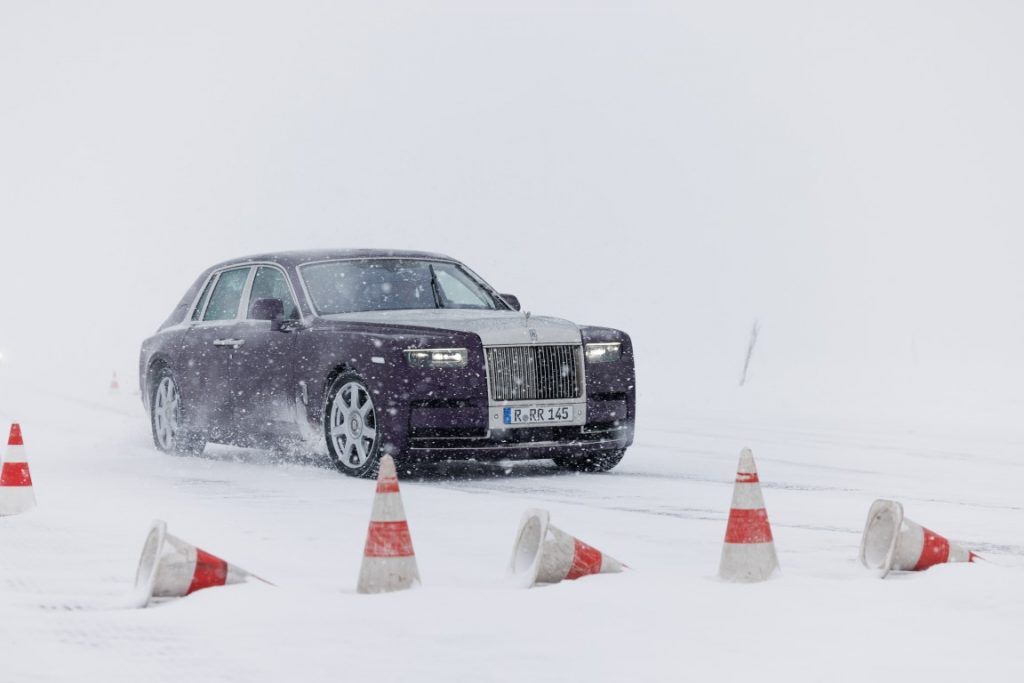
If the Ghost feels big, the Phantom feels immense. It’s more than five metres long and over two metres wide. It weighs almost three tonnes. Orange cones denote the clipping points of several corners that slalom together to form a rudimentary circuit. Again, ‘apex’, ‘circuit’ and ‘clipping points’ are terms rarely used in reference to a Phantom.
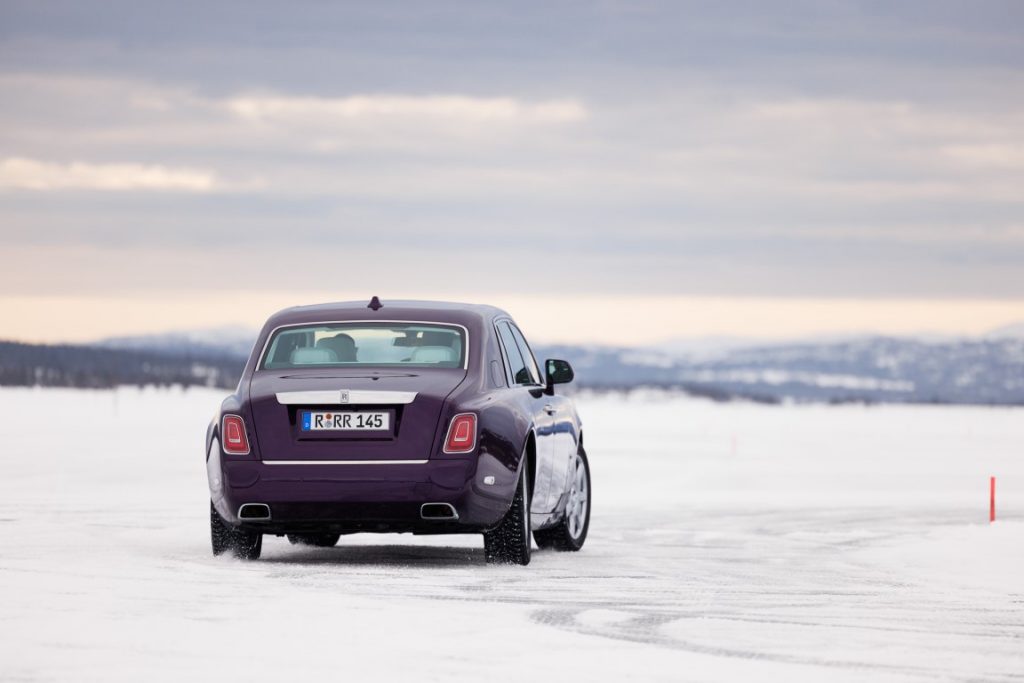
As it turns out, the idea of drifting a Rolls-Royce Phantom is rather more titillating than the reality of doing so. The gargantuan machine allows you to provoke a gentle slide at very low speed, yet the systems quickly kill the power and pull the car back into line should you continue to behave in such an, ahem, uncouth manner. That said, there’s still a surprising level of agility for something with such monolithic proportions, largely because of its rear-wheel steering.
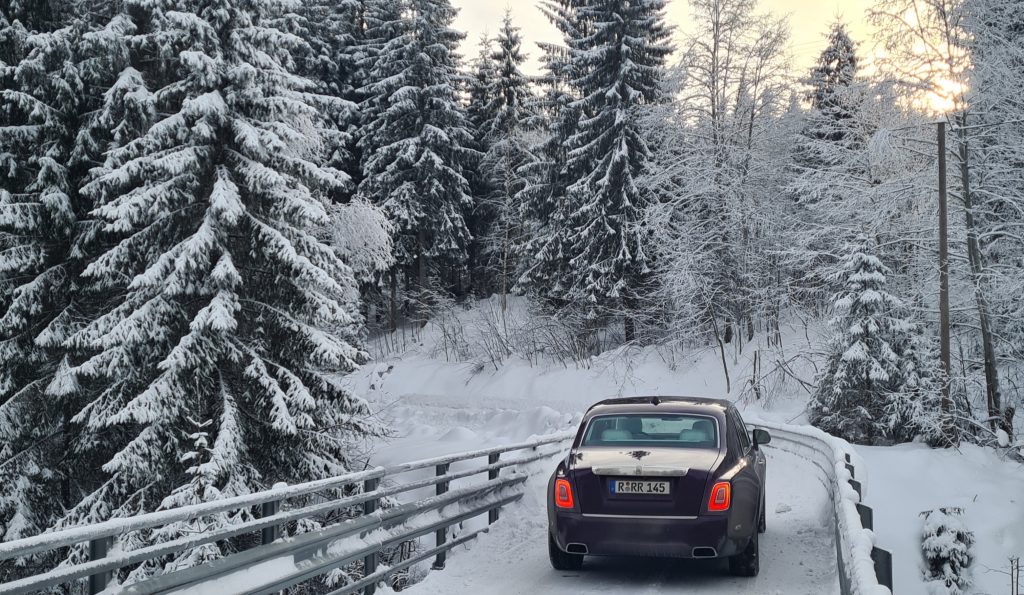
The Phantom’s imposing heft and stately proportions make far more sense while I’m driving it back to Oslo in total comfort and serenity before the flight home. The Cullinan and Ghost are arguably the better all-rounders, the former being sportier and marginally more subtle, while the latter provides that coveted high-up driving position and a vague sense of utilitarianism. But the Phantom remains the archetypal Rolls-Royce; not the best for drifting on a frozen lake, but unrivalled as the ultimate luxury vehicle.
